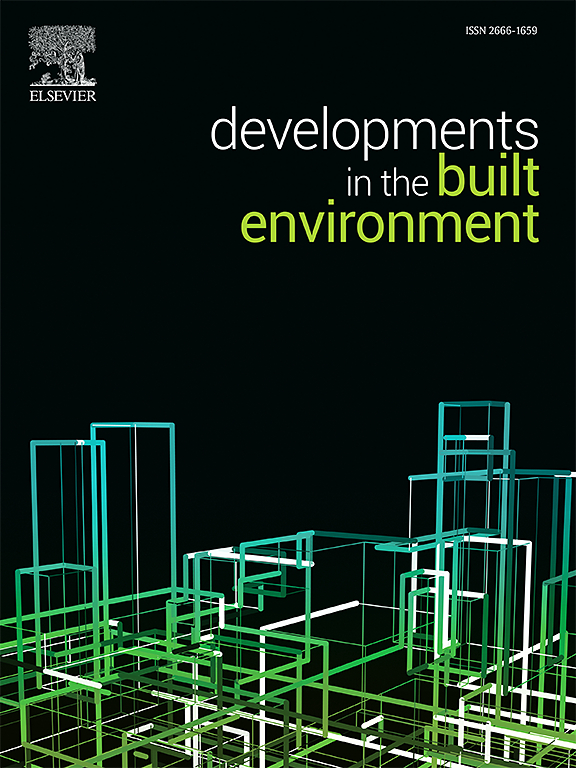Cost-effective indoor air quality monitoring in schools: in-field calibration of PM low-cost sensor
IF 8.2
2区 工程技术
Q1 CONSTRUCTION & BUILDING TECHNOLOGY
引用次数: 0
Abstract
The availability of low-cost sensors (LCS) devices for indoor air monitoring has boosted air pollution field. This study aims to calibrate particulate matter (PM) LCS (PM1, PM2.5 and PM10) in four age groups/types of rooms (infants, preschoolers, schoolers and lunchroom) during occupancy and non-occupancy period in nursery and primary schools in Porto, considering the purpose of being used as a tool to empower schools to apply indoor air pollution (IAP) mitigation measures.
Sixteen LCS devices (AirVisual Pro) and three research-grade instruments (DustTrak DRX 8534/8533) were used to monitor PM in around 130 different samplings. Before calibration, a methodology approach based on local maxima was applied to all PM fractions of LCS data, since various error events were found. Thus, after identifying and removing these events, a merged dataset was created using 1-min mean of LCS and reference data. Calibration models were applied, such as simple and multiple linear regressions (LR and MLR), linear and non-linear support vector regression (SVR) and gradient boosting regression (GBR).
A strong linear relationship was observed between LCS device and reference data, especially for non-occupancy period and in finer PM fractions (Pearson's correlation reached 0.94 for PM1 and PM2.5). While PM10 exhibited a slightly weaker correlation than the other PM fractions. The calibration models, particularly SVR and GBR models, significantly improved the results depending on the PM fraction, age group/type of room and occupancy pattern. Overall, results indicated that LCS devices are an effective tool for managing IAQ in schools, based on PM sensor.
具有成本效益的学校室内空气质量监测:PM低成本传感器的现场校准
用于室内空气监测的低成本传感器(LCS)设备的出现促进了空气污染领域的发展。本研究旨在校准波尔图幼儿园和小学入住和非入住期间四个年龄组/类型房间(婴儿,学龄前儿童,学童和午餐室)的颗粒物(PM) LCS (PM1, PM2.5和PM10),考虑将其用作授权学校应用室内空气污染(IAP)缓解措施的工具的目的。16个LCS设备(AirVisual Pro)和3个研究级仪器(DustTrak DRX 8534/8533)用于监测大约130个不同样品的PM。在校准之前,由于发现了各种误差事件,因此将基于局部最大值的方法方法应用于LCS数据的所有PM部分。因此,在识别和删除这些事件后,使用LCS和参考数据的1分钟平均值创建合并数据集。采用简单线性和多元线性回归(LR和MLR)、线性和非线性支持向量回归(SVR)和梯度增强回归(GBR)等校正模型。LCS设备与参考数据之间存在很强的线性关系,特别是在非占用期和细颗粒物中(PM1和PM2.5的Pearson相关系数达到0.94)。而PM10的相关性略弱于其他PM组分。校正模型,特别是SVR和GBR模型,显著改善了PM分数、年龄组/房间类型和入住模式的结果。总体而言,结果表明LCS设备是管理学校室内空气质量的有效工具,基于PM传感器。
本文章由计算机程序翻译,如有差异,请以英文原文为准。
求助全文
约1分钟内获得全文
求助全文
来源期刊

Developments in the Built Environment
Multiple-
CiteScore
7.40
自引率
1.20%
发文量
31
审稿时长
22 days
期刊介绍:
Developments in the Built Environment (DIBE) is a recently established peer-reviewed gold open access journal, ensuring that all accepted articles are permanently and freely accessible. Focused on civil engineering and the built environment, DIBE publishes original papers and short communications. Encompassing topics such as construction materials and building sustainability, the journal adopts a holistic approach with the aim of benefiting the community.
 求助内容:
求助内容: 应助结果提醒方式:
应助结果提醒方式:


